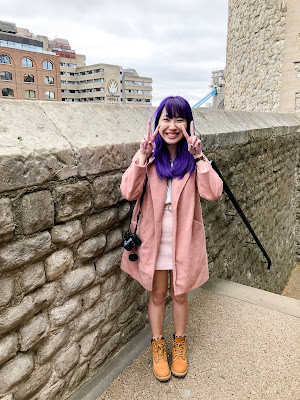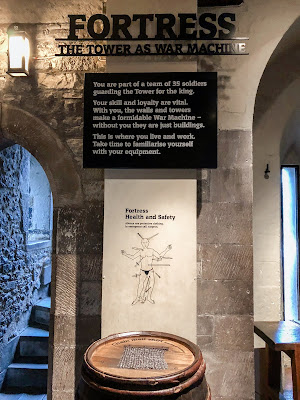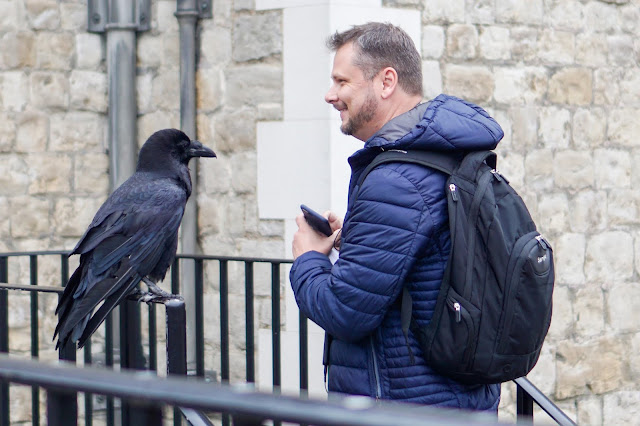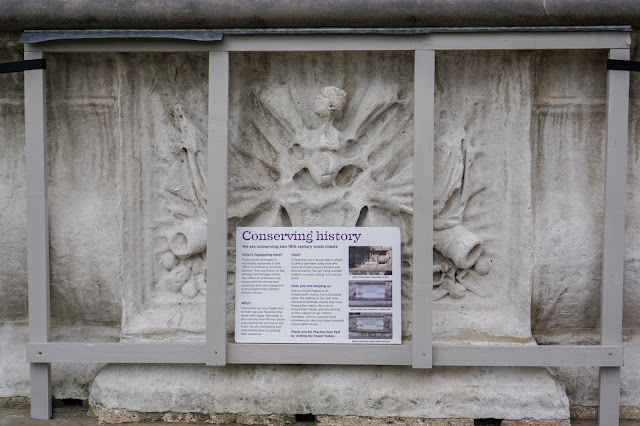Tower of London (London Europe Day 2.5) | April 2018
July 23, 2019After Cheryl and I successfully hauled our dumbasses back to our hostel to get our printed tickets (why is it that such a progressive city like London insists on a physical ticket when we can easily show the QR code is beyond my understanding), we headed towards the Tower of London, which was about a 30-minute walk away.
Europe's extensive history never fails to amaze me, keeping in mind that I'm looking at this as a Singaporean whose country only has a century or two of history (and that's stretching it — we were taught predominantly only about the events leading to our independence and the policies implemented after). It blows my mind that European history traces back to millenniums back.
We regrettably, but unsurprisingly, didn't have enough time in Tower of London because we seriously underestimated the tremendous area Tower of London conquered so we had to skip some structures and towers since we were running out of time.
If I were to travel to London again, I'd definitely go back and allocated three hours (or even more) for it. I would also recommend getting the guidebook if you want to truly understand the importance of Tower of London to English history.
The Bell Tower here, built in the late 12th century, was used to signify to prisoners that it was time to return to their quarters. The Bell Tower now rings to warn visitors that the Tower of London would close soon. The Bell Tower was also where Elizabeth I was imprisoned by her half-sister.
Torture in the Tower of London was most prominent during the 16th and 17th century and only a diminutive amount of prisoners were tortured.
Many prisoners were transported into the Tower of London via this gate, which was later known as the Traitors' Gate. Queen Anne Boleyn was thought to have brought into Tower of London as a prisoner through this gate as well, although this fact was highly debated by scholars.
I remember being awestruck by London's scenery. The futuristic-looking City Hall, where hundreds of salaried workers are daily, was just separated from Tower of London, boasting several centuries of history, by one river — not just a river too; River Thames is England's longest river. A little further down was the famed Tower Bridge, which is now a "must-have" in every tourist's itinerary.
I wondered how was it like being imprisoned in the Tower of London. The prisoners probably didn't enjoy the same views — after all, the Tower Bridge was only constructed in the 19th century and the City Hall much later. What did they see? How did they feel? It remains a mystery.
The Wakefield Tower, constructed in the 13th century, was also known as the King's apartment. The Wakefield Tower was also where Henry VI was struck by Edward IV during his prayer in the small chapel of this tower.
The royal slumber gives us a peek into the lavish lifestyles of the kings. This replica presents the room as it was during the time of Edward I.
The glass buildings against the UNESCO-protected Tower of London. Again, the juxtaposition of these buildings is truly astounding.
I don't know what is it about Asian tourists but they always nail touristy photos. The man we approached even used portrait mode!
London's winds were brutal and unforgiving, evident by Cheryl's hair slapping against her face. We were absolutely freezing beneath our smiles.
Inside the Lanthorn Tower, which was built in the 13th century but was largely destroyed by a fire in the 18th century.
The Salt Tower was also constructed in the 13th century and held famous prisoners like John Balliol, the king of the Scots.
There were many prisoners graffitis around — some with no explanatory plaque. I'm not sure if there are explanations provided if you rent the audio guide, but I quite like the idea of leaving things ambiguous as well. After all, not every event was recorded and some records were burnt or destroyed due to accidents or war, leaving historians to fill in the gaps.
This particularly intricate graffiti was labelled. I can only imagine how bored the prisoners were with no entertainment system in place.
I stood there for a while, taking in the hustle and bustle of city life in London — the traffic jams, frequent screeching sirens from ambulances etched deeply in my mind, people of all races and ethnicity in one area. I wonder if these sights were what the kings envisioned for London and England, and what would they have thought of the country's progress if they were still alive today. All these questions with no known answers.
Look at the size of that raven! And the tourist looking mighty pleased with himself that he got a selfie with the humongous raven.
Tower of London homed London's first zoo. For about 600 years, exotic animals like lions and even polar bears resided in the Tower of London. Imagine how much colder the climate used to be if a polar bear could survive in London.
Some of the interesting stories featuring the animals' time in Tower of London.
Cheryl heaved a sigh of relief when we entered this exhibition featured primarily about conscription during the first world war. We share a crazy amount of common interests but my love for Tudor history wasn't one of them.
Behind this was the Chapel Royal of St Peter ad Vincula, which I blogged about separately because I felt so much for place knowing that it's the final resting place for Anne Boleyn, one of the queens I have been obsessed with for a long time.
The Waterloo Barracks, built in the 19th century, used to be barracks for 800+ soldiers. Some scholars thought Anne Boleyn's real execution site was around this location.
The aforementioned polar bear that was kept in the Tower of London. The polar bear was gifted to Henry III by the King of Norway,and it used to hunt for food in River Thames.
I found myself wandering around the gift shop, searching for something to commemorate my first visit to the Tower of London and, of course, I gravitated towards souvenirs Henry VIII souvenirs.
The Anen Boleyn cup and tote bag were so tempting *sobs in pounds*

Can I come back to get this cushion for my future home?
I was so, so, so tempted by these keychains but I honestly have no use for it... Equally tempting where the individual keychains!
I eventually settled for this little magnet of Henry VIII. Before anyone thinks it's a waste of money, I'll have to declare that I still look at it almost every day 1.5 years later, especially when I'm putting on my shoes to go out. I love being reminded that dreams come true when you work hard enough :')
Ending this post with a conversation I had with Cheryl, who was walking ahead of me, after we exited the gift shop.
Cheryl, upon hearing some rustling sounds made by my paper bag: *in a very judgemental tone* Are you taking out your Henry VIII magnet to admire it?
Me: ......... How did you know?
Cheryl: You freaking weirdo.
Such is our friendship.















































































































0 comments